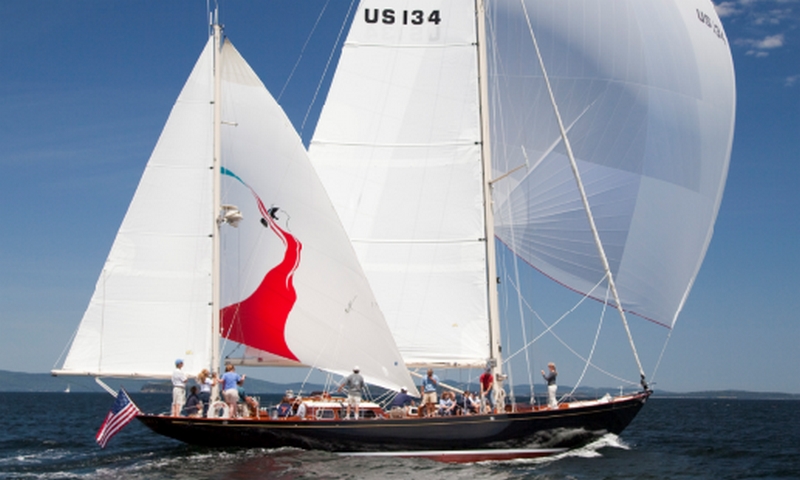
By Joe Parker
“Maybe the prettiest yacht ever built.” That is what some folks say about Bolero. Of course, beauty is in the eye of the beholder, still, very few boaters would be able to take a quick glance at this yacht and not continue to stare and measure every detail with their eyes. Any sailor would imagine themselves on board sailing for Bermuda or their destination of choice. Her proportions are just right and the construction details are elegant and refined.
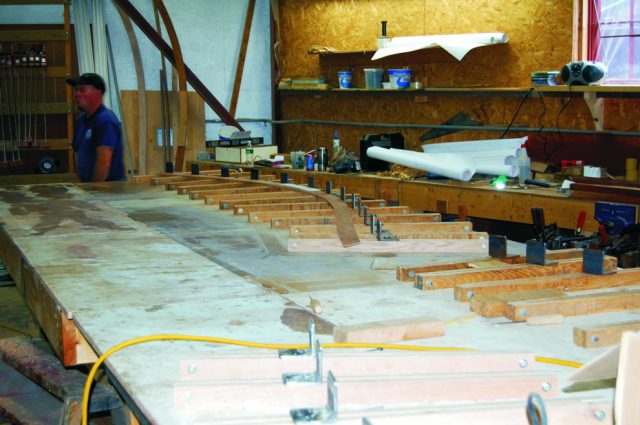
Bolero’s designer Olin Stephens had this to say, “Bolero is an example of the best in practical yacht design using top-grade wood construction.” Of course, he made this statement in the early 1950s shortly after Bolero was built and launched. Today, high-end wooden boat construction involves some new methods. The lovely old girl has just emerged from the building at Rockport Marine following a thorough restoration showing off some very modern wood composite construction techniques and looking as good as ever.
Bolero was built in 1949 at the Henry B. Nevins shipyard in City Island, New York. She was designed by Olin Stephens of Sparkman and Stephens Yacht Design (S&S), an iconic design firm. She reflected the finest in materials and construction methods of the time and has lived a long life. The current restoration expands on the concept of the best materials and workmanship to include the latest epoxy offerings from WEST SYSTEM® Epoxy as well as the superb skills of one of the busiest yards in coastal Maine.
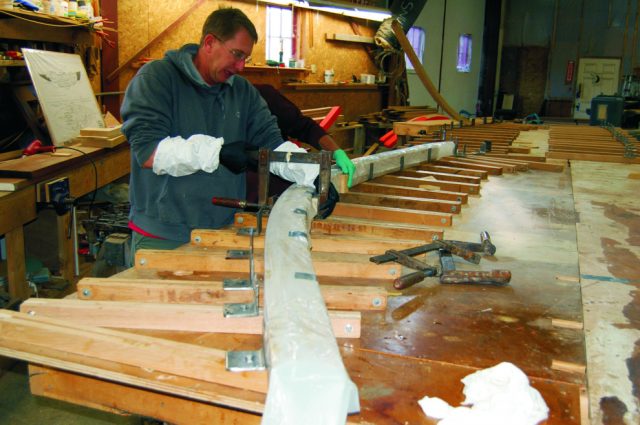
John England, Project Manager at Rockport Marine in Rockport, Maine, headed up a crew of 20 carpenters and shipwrights over the 20-month restoration. The yacht was nearly completely reconstructed. A section of hull that was replaced in 2001–2002 is the only remaining portion of the hull or previous restoration work. The yacht also had a massive Monel welded structure supporting the ballast keel, mast step, mast partners, two deck beams, and the chainplates. This structure is still in great condition and was left in place while the framing members were replaced around it.
The entire hull skeleton was rebuilt with laminated white oak frames. These frames were glued with WEST SYSTEM Epoxy. G/flex works exceptionally well with white oak, a notoriously difficult to bond wood.
Our tech staff worked with the Rockport crew to define the best processes to machine and glue up these large frames and structural components. The white oak stock was milled to ¼” (6.3 mm) thick, then sanded with 80-grit and wiped with alcohol and a paper towel prior to assembly. Once the skeleton was rebuilt, the hull planking was replaced. The inner planking is white cedar and the outer planking is Sipo, an Indonesian mahogany. The hull planking was glued together with WEST SYSTEM 105 Resin®/206 Slow Hardener®. All planking was scarfed with a locking or nibbed scarf and glued in place on the hull. This type of scarf is great in thicker stock to help align the scarf and prevent under- or over-matching the scarf bevels.
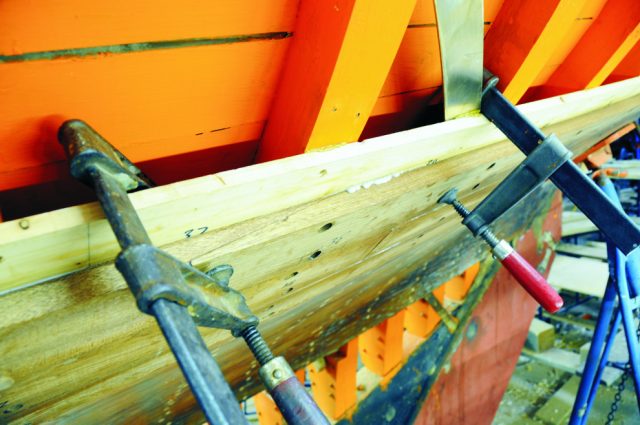
The deck is framed with laminated white oak glued up with G/flex for the main beams. The smaller frames are laminated spruce glued up with 105/205. The deck is a 4-layer composite to allow for a traditional looking overhead on the inside of the boat and a traditional looking planked deck on the top side. The first layer is tongue and groove Alaskan white cedar laid fore and aft and glued up with 105/206. Then two plies of ¼” (6.3 mm) Meranti plywood are laminated with 105/206 and vacuum bagged onto that. The final layer is planked fore and aft with Alaskan white cedar and left natural on the top surface for a very traditional look and feel. The deck beams were laminated on the bench and then assembled on the hull framing. The deckhouse was also re-worked and installed as a complete structure.
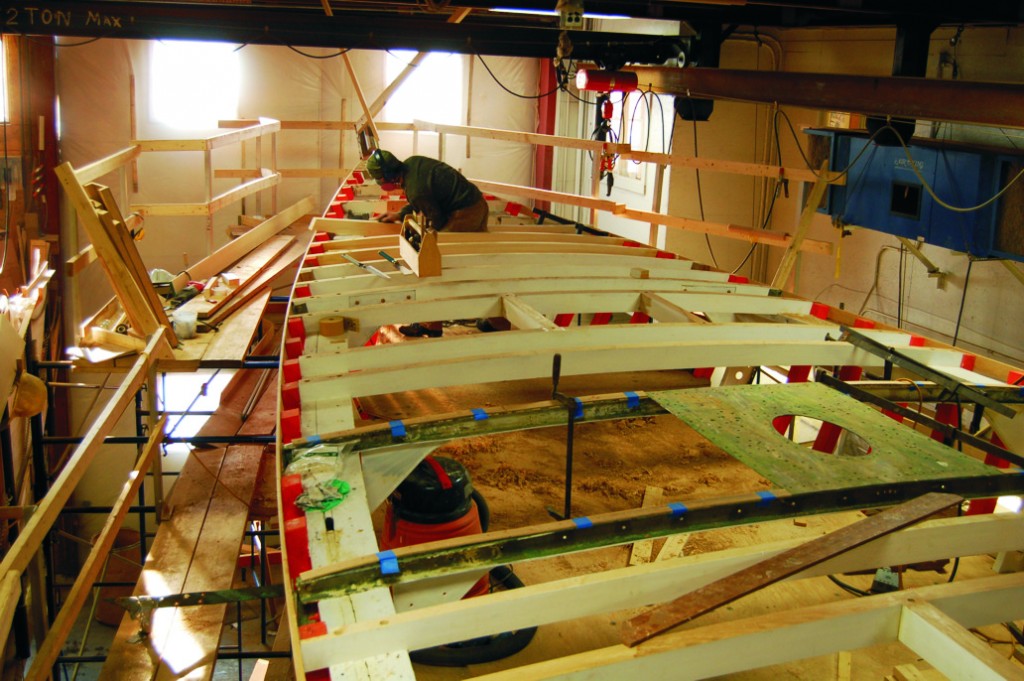
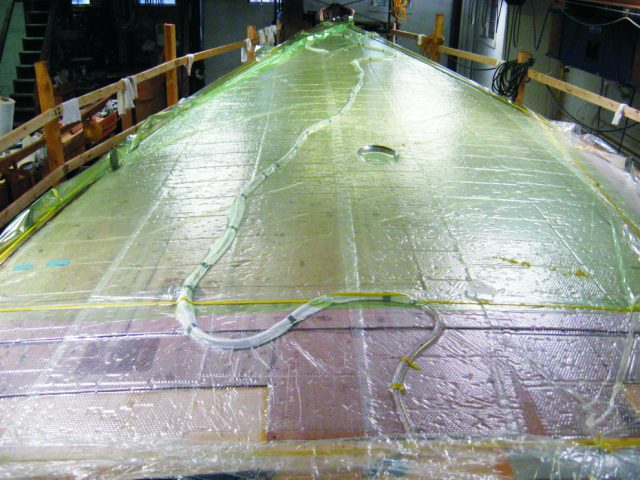
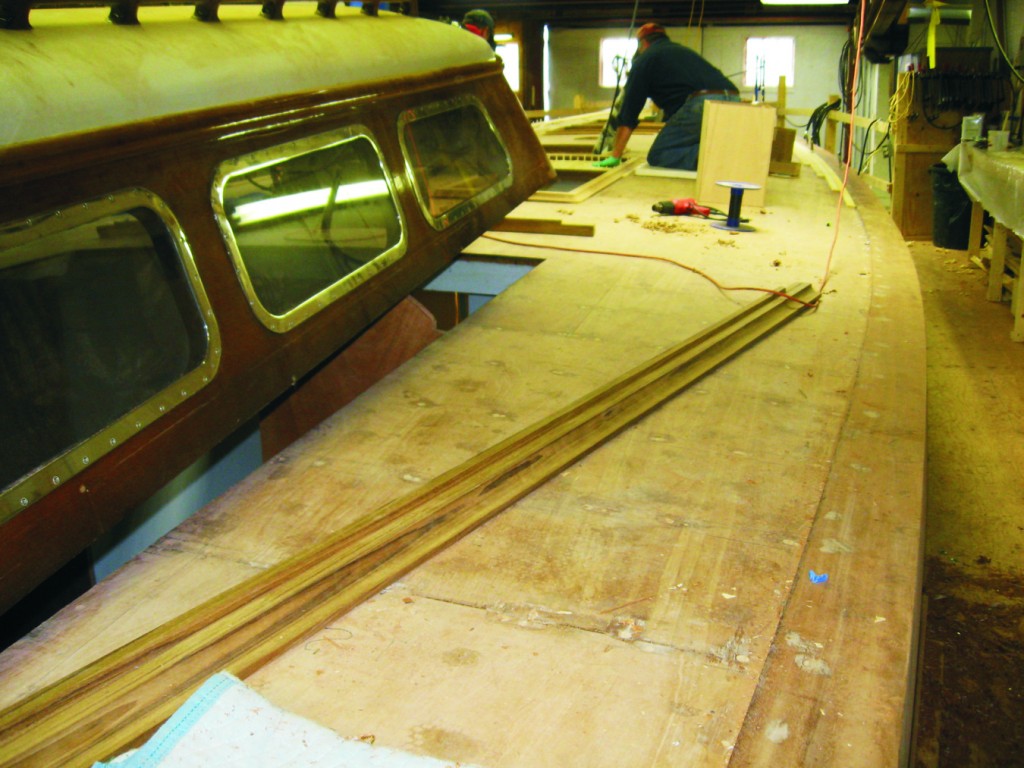
The mast, rigging, and all deck hardware were all refurbished. All new mechanical and electrical systems were installed in the boat to bring her up to modern yacht standards.
Bolero is as stunning as ever and is still a wonderful sailing yacht. Her timeless beauty will now be admired by another generation of sailors and yachtsmen. If previous history is any indication, Bolero will be sailing and turning heads for another 60 years.
Cover image of Bolero under sail, ©Billy Black

